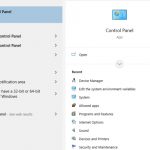PPP stands for “Point-to-Point Protocol”, which is a data link protocol that links two computers together over a point-to-point connection. PPP was created in the 1990s, and has since been updated to include many of the newest features found in more modern protocols.
Point-to-Point Protocol is one of the most widely used data communications protocols in computer networks. It was designed to provide a simple way to send packets over a single connection. This protocol is also known as PPP or PPTP and it works by creating an “internetwork” between two nodes, which means that they are connected together by some type of physical media like cable or DSL. Point-to-point protocol has been around for quite some time now, but it remains popular because it is easy to use and there are few configuration steps necessary before you’re ready to go!
Types of PPP
Point-to-point protocol can be broken down into 3 different types – based on what is connecting the nodes together:
- PPP over Serial Port – these connections are made by using a physical cable, which connects one node to another. The data that flows over this type of connection is transmitted as bits in asynchronous serial form at whatever speed the network hardware supports. This type of point-to-point channel requires relatively little overhead for packet creation and transmission because it’s just sending packets from one device to another without any possible interference or collisions with other devices on your local area network. Serial PPP relies heavily on framing techniques such as HDLC/LAPB to ensure successful communication between nodes.
- PPP over Ethernet – these connections are made by using a physical cable, which connects one node to another. The data that flows over this type of connection is transmitted as bits in asynchronous serial form at whatever speed the network hardware supports. This type of point-to-point channel requires relatively little overhead for packet creation and transmission because it’s just sending packets from one device to another without any possible interference or collisions with other devices on your local area network. Ethernet PPP relies heavily on framing techniques such as HDLC/LAPB to ensure successful communication between nodes.
- Multipoint Networking Interface Protocol – unlike Serial and Ethernet Point-To-Point protocol, MPNIP can use a single wire to connect multiple nodes.



